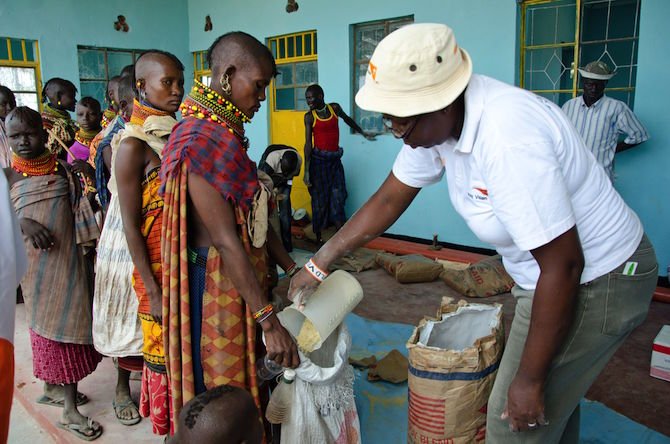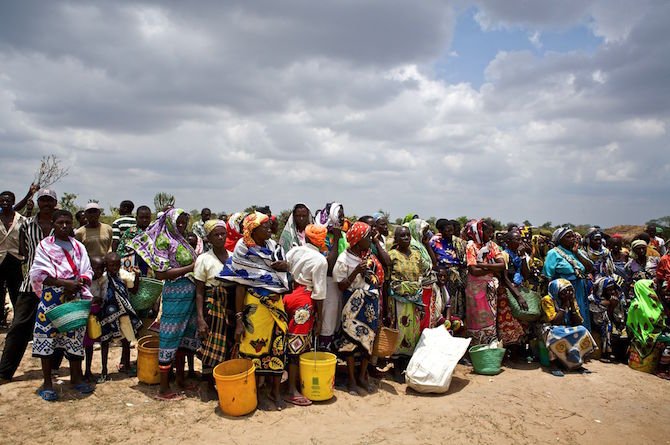Imagine you have three children but only enough food for one. Or imagine you have to choose between providing a meal for your family or providing medicine to treat your son or daughter. These are real choices that the poorest families around the world face every day, as World Vision’s new report “When there is no food assistance: breaking our promise to the world’s most vulnerable children” shows.
The role of international food assistance is to provide much needed help to vulnerable children and families during a tough time in their lives so they don’t have to make these impossible choices. However, with a gap between humanitarian need and funding, (the largest in 10 years!) millions of the world’s most impoverished men, women and children are not getting the help they have been promised.
What factor could threaten food assistance further this year?

Now El Niño, the climate phenomenon linked to a warming of ocean temperatures in the equatorial Pacific, threatens to put the lives, food security and livelihoods of millions of already vulnerable women, men and children at increased risk. Scientists warn this has the potential to be one of the worst El Niño’s since the 1950s. When records began, the livelihoods of millions were already put at risk. In Africa alone, more than 11 million children are at risk.
Without new funds and a global humanitarian system that is already at a breaking point, there are some very tough choices and questions for all of us ahead as droughts lengthen. Who decides who eats and who goes hungry? That is a choice that no one should have the right to make.
Even if we focus on the toughest cases – which really means deciding to feed a few well rather than feed many poorly – we are delaying the inevitable with short-term solutions. The shortsighted approaches will hinder our responsibility to meet the food and nutrition needs of those less vulnerable today that will more than likely become the most vulnerable down the road.
In a hunger-free world, those vulnerable communities would be prepared to handle shocks like El Niño. But right now those hit hardest by drought are already living in chronic hunger.
What can be done to improve food assistance?

Building a hunger-free world requires greater investments in child-sensitive national safety nets programmes, national disaster risk management and climate change adaptation policies and systems and greater support for sustainable, profitable, agricultural livelihoods strategies for small-holder farming families, who make up the majority of hungry people in the world .
Food assistance has a critical role to play as well. Our failure to meet the most basic food needs of millions of children and their families every year can be addressed with innovative thinking and new ways of addressing age-old problems. Food assistance helps families alleviate hunger today, while innovative programmes, such as Cash for Assets (which provides individuals with loans to start small business projects), school meals and targeted supplementary food programming by addressing the root causes of hunger. This fosters a resilience that will last a lifetime.

Hope is not dead, nor is hunger the final punctuation mark: a new set of global sustainable development goals agreed to by governments around the world are set to start on January 1, 2016 and promise to ‘leave no-one behind
In the face of El Niño and other crises, leaders at the national, regional and international leaders have a responsibility to address the underlying causes of food insecurity and guarantee that the most vulnerable children and communities get ahead through an immediate, effective, global response to prevent loss of life and livelihoods. Next year, the UN hosts the World Humanitarian Summit, bringing together governments and aid experts to thrash out solutions. And with the Climate Summit in Paris, global leaders have another opportunity to address one of the most important underlying causes of climate-related disasters such as droughts and floods.
Now is the time to keep our promise to the world’s most vulnerable.
There are many approaches to ending hunger and this one can include you. Go to TAKE ACTION NOW to find out how you can help end hunger by hosting a #HungerFree dinner.
This article was written by Thabani Maphosa Food Assistance Partnership Leader in support of World Vision.